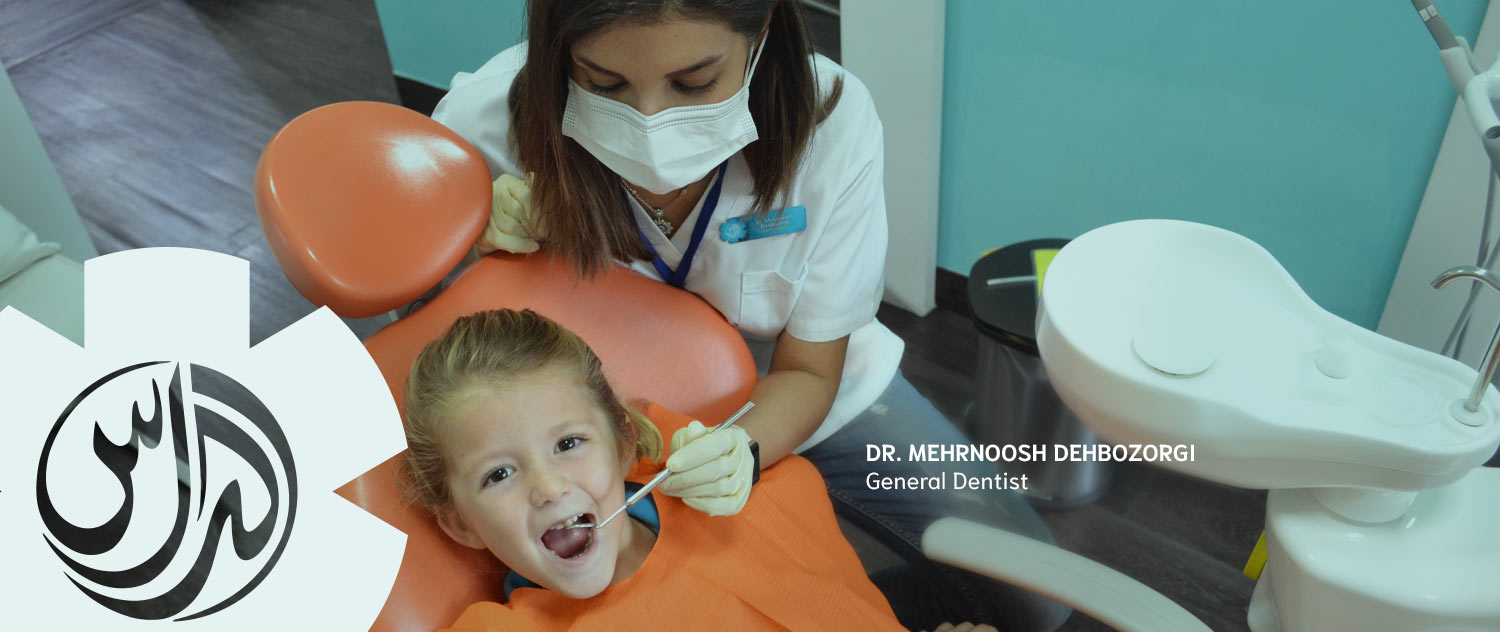Pave the way for better oral health
By Dr. Mehrnoosh Dehbozorgi, General Dentist
Oral health is an essential part of our overall health. All children should have access to preventive and treatment-based dental care at a young age. Pediatricians and family doctors play a crucial role in identifying children at high risk of dental disease and in advocating for more comprehensive and universal dental care for children.
Dental health can affect the functional, psychological and social dimensions of a child’s well- being. Oral pain has devastating effects on children, including sleep loss, poor growth, behavioral problems and poor learning. Developmentally crucial processes of communication, socialization and self-esteem are also affected by poor dental health.

Recommendations for prevention of dental caries:
The first oral examination should occur within 6 months of the eruption of the first primary tooth, and no later than 12 months of age. There after the child should be seen according to a schedule recommended by the dentist, based on the child’s individual needs and susceptibility to disease.
The role of fluoride in caries reduction has been extensively researched.The widespread use of fluoride in many regions such as Australia, Europe and North America lead to the decline in the prevalence of caries. Fluoride, when used appropriately, is safe and effective in preventing and reducing caries in children. When present topically and at low levels, it enhances the re-mineralization of enamel and prevents its demineralization. High levels of fluoride obtained when applying high concentration gels and varnishes will produce a calcium fluoride layer that will temporarily cover the surface of enamel.
Professionally applied fluoride gels, foams and varnishes are considered effective in reducing dental caries. The most commonly used fluoride products for professional application are 5% sodium fluoride varnish containing 22,500ppm F and 1.23 acidulated phosphate fluoride APF gel containing 12,300 ppm F.
Pit-and-fissure sealants have been used for nearly 5 decades to prevent and control carious lesions on primary and permanent teeth.
From a primary prevention perspective, anatomic pits and fissures on permanent molars trap food debris and promote the presence of bacterial biofilm, thereby increasing the risk of developing carious lesions. Effeciently penetrating and sealing these surfaces with a dental material—for example, pit-and-fissure sealants—can prevent lesions. From a secondary prevention perspective, there is evidence that sealants also can inhibit the progression of noncavitated carious lesions.
The sealant forms a smooth, protective barrier by covering all the little grooves and dips in the surface of the tooth. Dental decay easily starts in these grooves if they are not sealed.
Sealants are often applied as soon as the first permanent teeth start to come through. This is usually between 6 and 7 years of age. The rest are usually sealed as soon as they appear which can be any time between 11 and 14 years of age.
It is important to be informed so we can pave the way for a better oral health for all, especially for our young ones. If you have any questions or doubts, do not hesitate to contact us.
To find out more, please book an appointment with Dr. Mehrnoosh Dehbozorgi here.
Book a visit 04 452 9998 or by filling the online form